Main Content
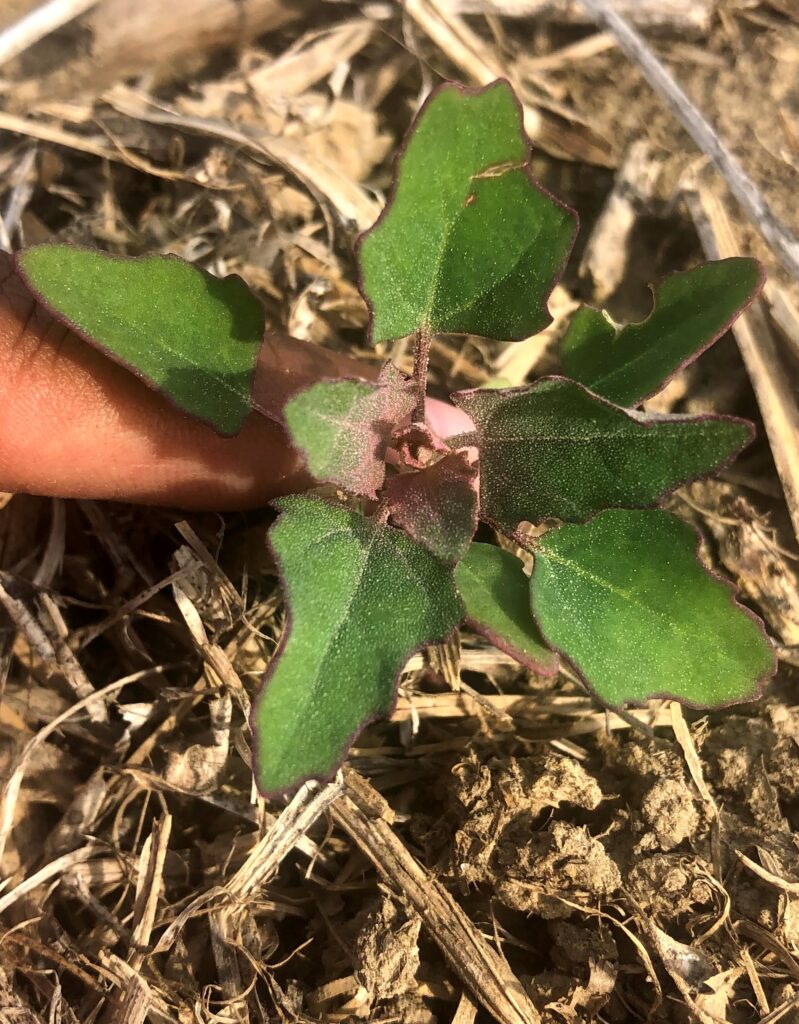
Common Lambsquarters (Chenopodium album) is a small-seeded, summer annual weed with a gray-mealy leaf coating that makes it easily recognizable in the seedling stage.
Importance as an Agricultural Weed
Common Lambsquarters is a common weed of most agronomic and horticultural crops. It is considered an early emerging weed but germination can continue throughout the growing season. Success with chemical management of Common Lambsquarters is highly dependent on timing. The waxy leaf coating diminishes efficacy of postemergence herbicides and growers in New Jersey commonly inquire about herbicide resistance. To date, we have not verified herbicide resistance among populations of Common Lambsquarters in NJ. Resistance to Group 2 (ALS inhibitors) and Group 5 (PSII inhibitors) herbicides has been confirmed in other states, however.
Where Common Lambsquarters escapes management, mature plants can produce more than 100,000 seeds. While its common to observe 50% seed mortality each year in a tilled soil, some Common Lambsquarters seeds can remain viable for many decades in the soil. Seed mortality is reduced in undisturbed soil or where deep tillage has buried seed in the soil.
Key Characteristics for Identification
| Characteristics | Description |
| Overall Appearance | Seedling stems and underside of leaves are maroon-green Erect plant with many branches, usually 3-5 feet tall Stem has vertical ridges that may have maroon stripes |
| Leaf Attributes | Gray-mealy coating on surface of younger leaves First leaf pair is opposite, all other leaves alternate Margins of young leaves have few teeth Leaves on mature plants are rhombic/egg-shaped to lanceolate with irregular teeth on leaf margins Uppermost leaves may be linear and lack petioles |
| Presence of Hairs | Hairless Gray-mealy coating of young leaves and stem may be confused with hairs |
| Flowers | Flowers are inconspicuous and produced from June to September Flowers appear as dense clusters; they are produced on spikes to form a panicle |
Chemical Control Options
For herbicide recommendations, refer to the following publications. Additional commercial crop production guides can be found here. Contact your local county Extension office with specific questions.
- Field Crops: Mid-Atlantic Field Crop Weed Management Guide
- Vegetable Crops: Mid-Atlantic Commercial Vegetable Production Recommendations
- Turfgrass: NJAES Factsheet 385 Broadleaf Weed Control in Cool Season Turfgrasses
- Home Landscape: NJAES Bulletin 272 Weed Management in Ornamental Plantings
Important Note: Common lambsquarters populations resistant to Group 2 (ALS inhibitors, e.g., thifensulfuron-methyl) and Group 5 (PSII Inhibitors, e.g., atrazine, metribuzin) herbicides have been confirmed in the Mid-Atlantic region and across the country. Diligence is needed to prevent the development of herbicide resistant biotypes on your farm. When utilizing Group 2 herbicides, use the full label rate and tank-mix with another effective herbicide mode of action.
Integrated Weed Management Strategies
Common Lambsquarters seeds germinate readily in response to tillage and cultivation. In fields with a history of lambsquarters infestation, this characteristic can be exploited with a spring tilled fallow to reduce lambsquarters density before planting. Lambsquarters rarely germinates from depths of 1.5 inches or greater, so use progressively shallower cultivation to avoid bringing seed up from greater depths. Emerged seedlings can be destroyed through very shallow cultivation or a burndown herbicide application prior to planting. The largest lambsquarters plants are those that emerge early. Because seed production is correlated with total plant weight at maturity, destroying early-emerged plants with a tilled fallow can reduce total seed production.
Mulches deeper than 2 inches can result in fatal germination as the small seeds of lambsquarters cannot push through the mulch layer to establish. Light soil-incorporation of a legume cover crop can also promote fatal germination; decomposition releases nitrogen which encourages lambsquarters germination, but the seedlings cannot establish through the cover crop mulch layer. Lambsquarters grows rapidly in response to nitrogen fertilization so avoid over or heavy fertilization before the crop is established. A dense and uniform crop stand will help improve the competitive advantage for the crop. Where possible, tine weeding and hilling up are effective at killing seedings after the crop is planted.
Lambsquarters plants dry out quickly when uprooted, but plants that have already flowered can still form seeds if flowering stalks are left on the soil surface. Plan to physically remove plants from the field if flowering has occurred. If early steps to prevent lambsquarters establishment are unsuccessful, know that mature plants retain seeds into the fall. Removing plants from vegetable fields post-harvest can help reduce seed returned to the soil. For combine-harvested grain crops, consider harvest weed seed control measures to limit dispersal of lambsquarters seed at harvest.
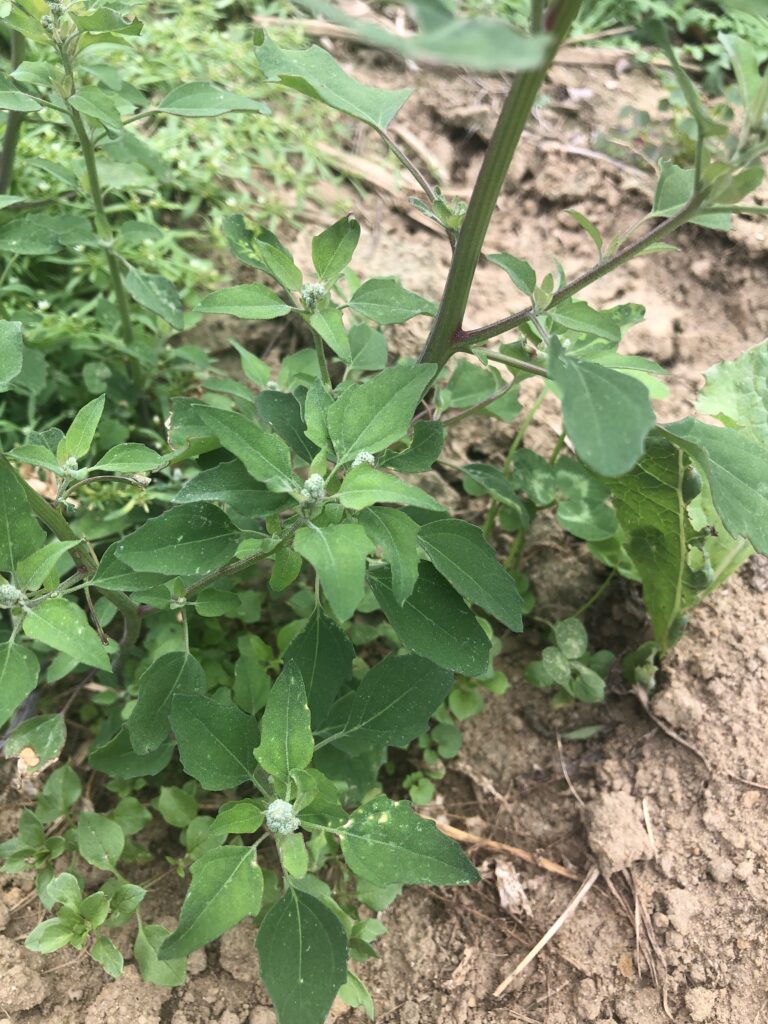
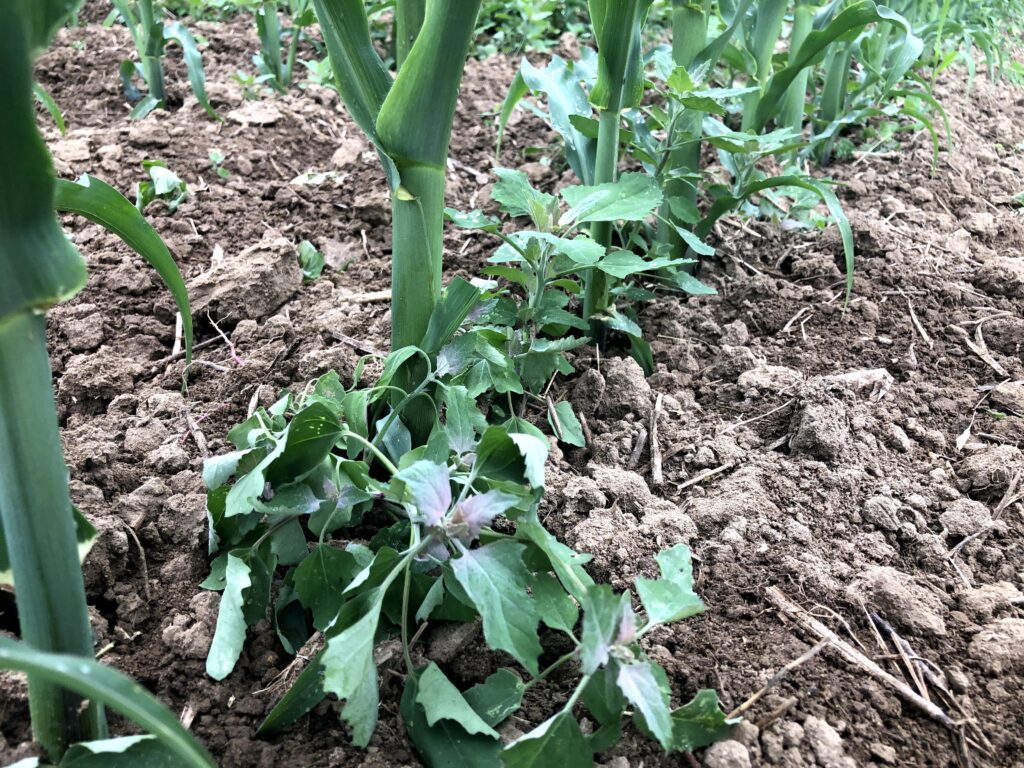
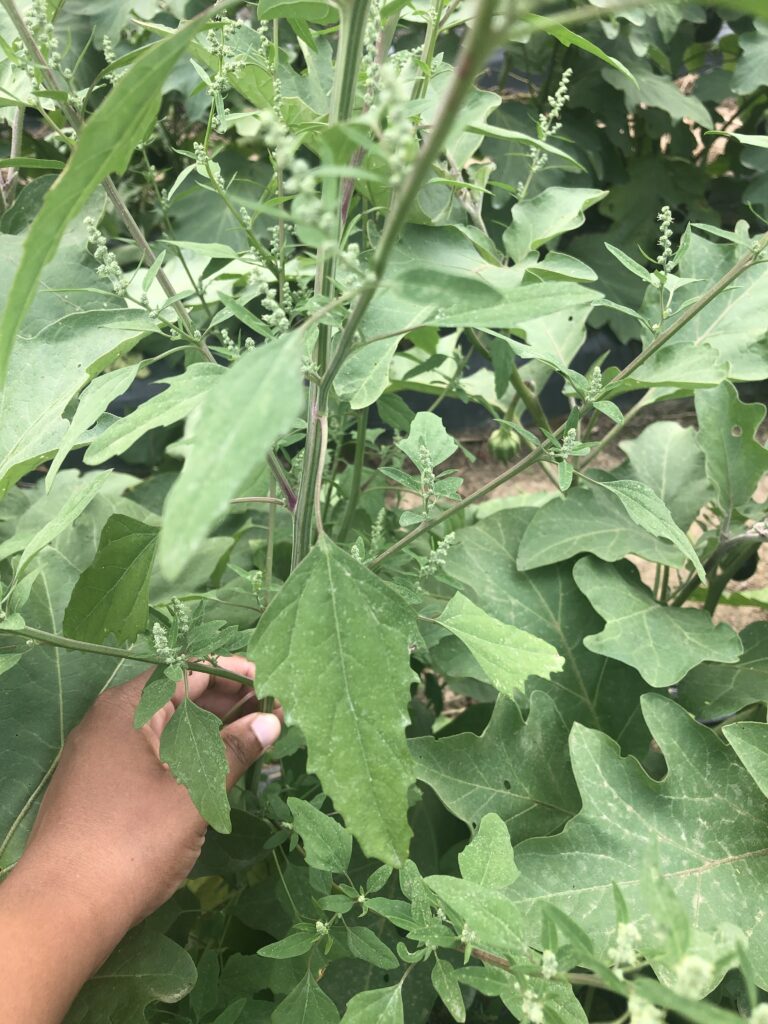
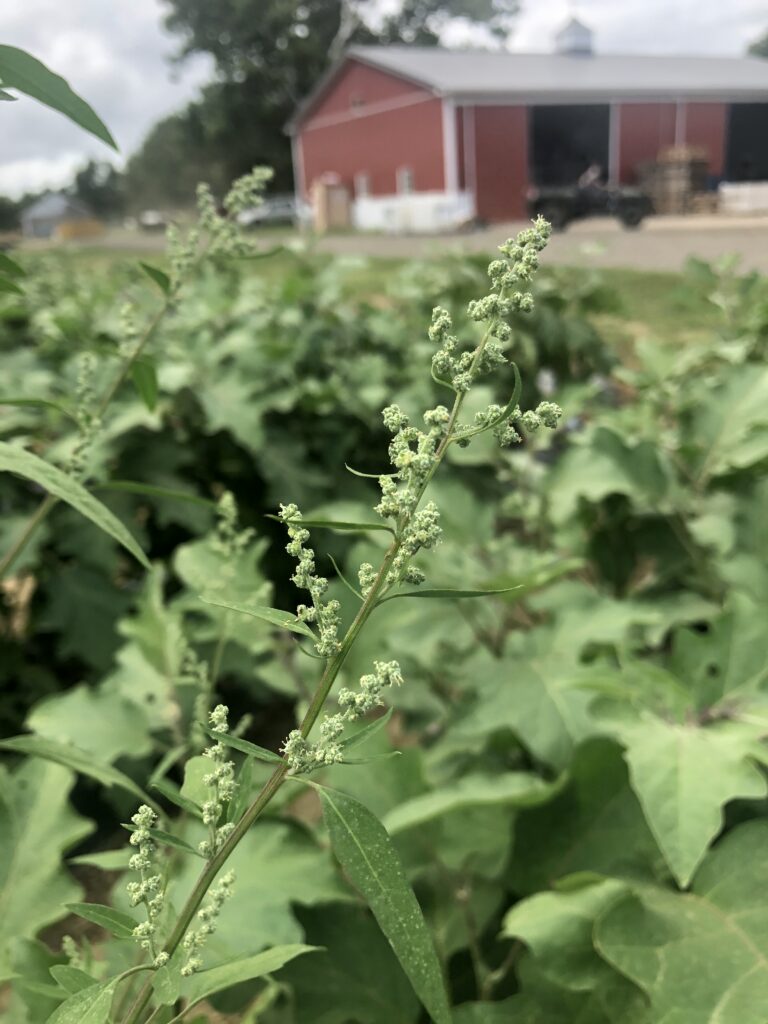
References
Mohler, C.L., Teasdale, J.R., & DiTommaso, A. (2021). Major agricultural weeds of the United States and Canada. In L. Barba (Ed.), Manage weeds on your farm: A guide to ecological strategies. Sustainable Agriculture Research and Education.
Heap, I. The International Herbicide-Resistant Weed Database. Online. Wednesday, March 30, 2022. Available www.weedscience.org
Uva, R.H., Neal, J.C., & DiTomaso, J.M. (1997). Weeds of the Northeast. Cornell University Press.